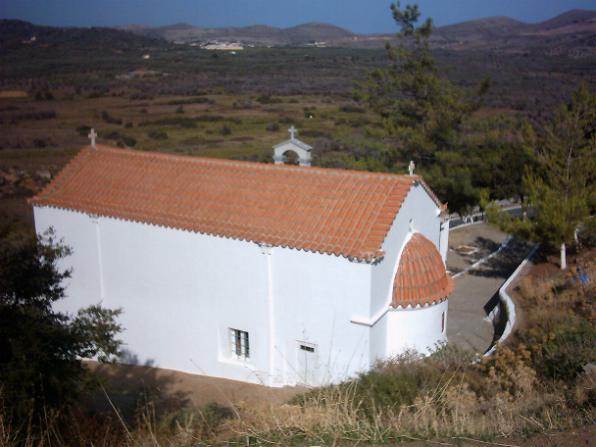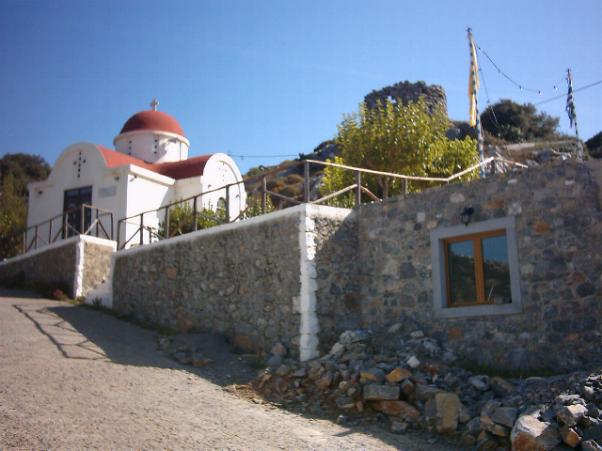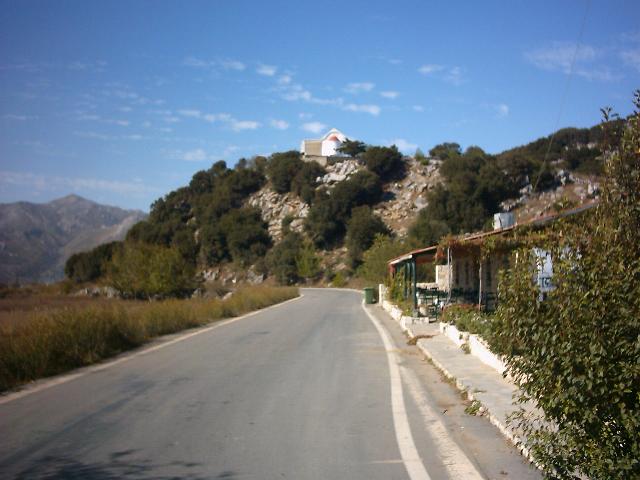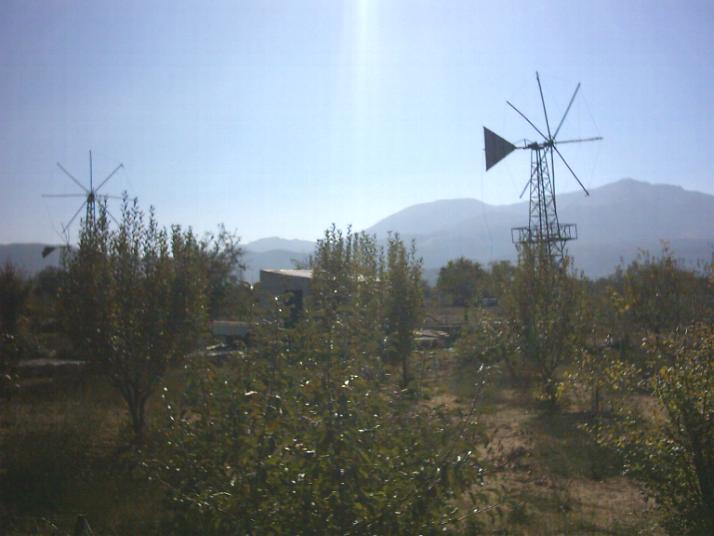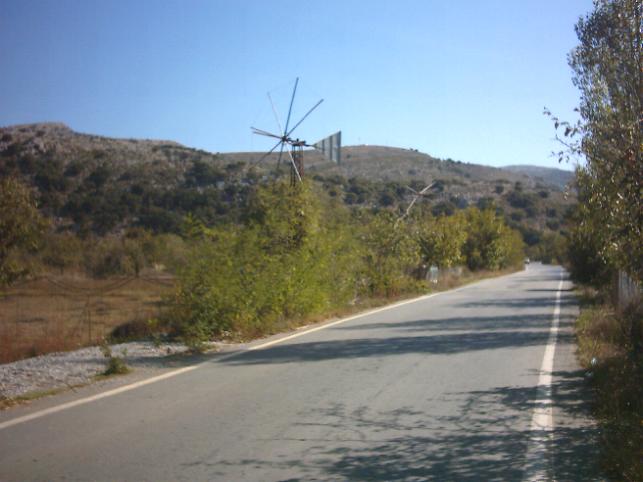|

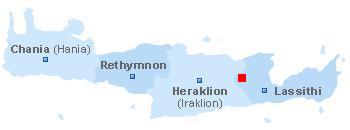 The Lasithi plateau is 850 metres above sea level. It is 12km from east to west and 6km north to south and surrounded by high peaks, the highest is Spathi at 2,418 metres above sea level. These peaks protected the inhabitants of the plateau from attacks. Because the Lasithi Plain is at such a high altitude it is usually a bit cooler than on other places in Crete.
The plain is at 43 kilometers distance from Agios Nikolaos and and has about 20 villages that are laid out in a circle around it.
There are two entrances to the plateau: one is from the side of Agios Nikolaos and the other is a pass into the plateau coming from the Iraklion side through Kera. The Seli Ambelos Pass, at 900 metres, is dotted with abandoned windmills on either side. There is an impressive view of the plateau from here.
The Lasithi plateau is 850 metres above sea level. It is 12km from east to west and 6km north to south and surrounded by high peaks, the highest is Spathi at 2,418 metres above sea level. These peaks protected the inhabitants of the plateau from attacks. Because the Lasithi Plain is at such a high altitude it is usually a bit cooler than on other places in Crete.
The plain is at 43 kilometers distance from Agios Nikolaos and and has about 20 villages that are laid out in a circle around it.
There are two entrances to the plateau: one is from the side of Agios Nikolaos and the other is a pass into the plateau coming from the Iraklion side through Kera. The Seli Ambelos Pass, at 900 metres, is dotted with abandoned windmills on either side. There is an impressive view of the plateau from here.
The days of glory are gone for the windmills on the Lassithi plain, and the reason to visit it should be the trip that takes you there and the nice views that you get along the way. If you're expecting a large amount of working windmills than you are going to be disappointed (you must go to my country, Holland, if you want to see those ;), because I don't believe any of them is working any more. The villages along the route, like for instance Tzermiado, and the really old stone windmills and churches that you will pass along the way are very attractive though, and worth to take a look at.
The fertile soil of the Lassithi Plateau is due to alluvial run-off from the mountains when the snow melts in the spring. The ditches on the plateau were installed by the Venetians in 1631 when they wanted to insure a good harvest. The irrigation was handled by the many visible windmills seen in the plateau. Most of these have been abandoned for the more efficient electrical pumps.
The main crops of the plateau are potatos, vegetables apples and other fruits. There are also many almond trees which blossom in late January (the Brides of Winter) giving the plateau a wonderful appearance.
|




